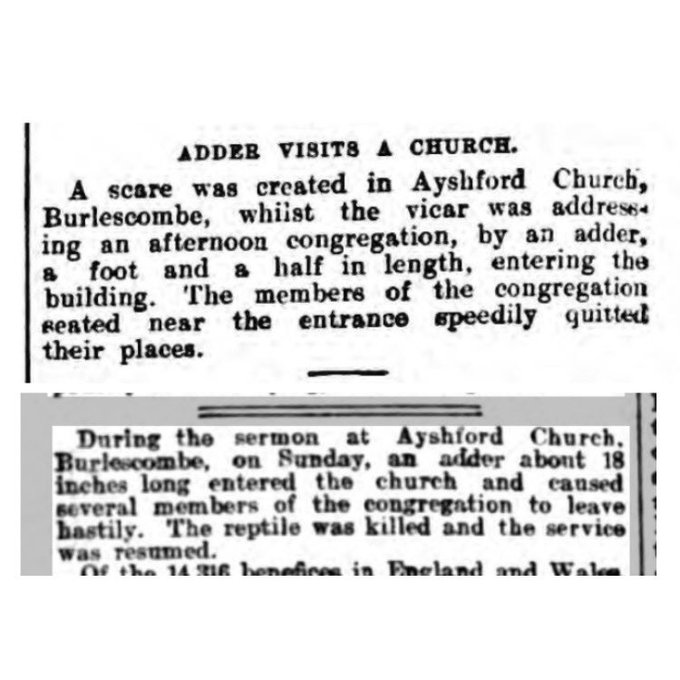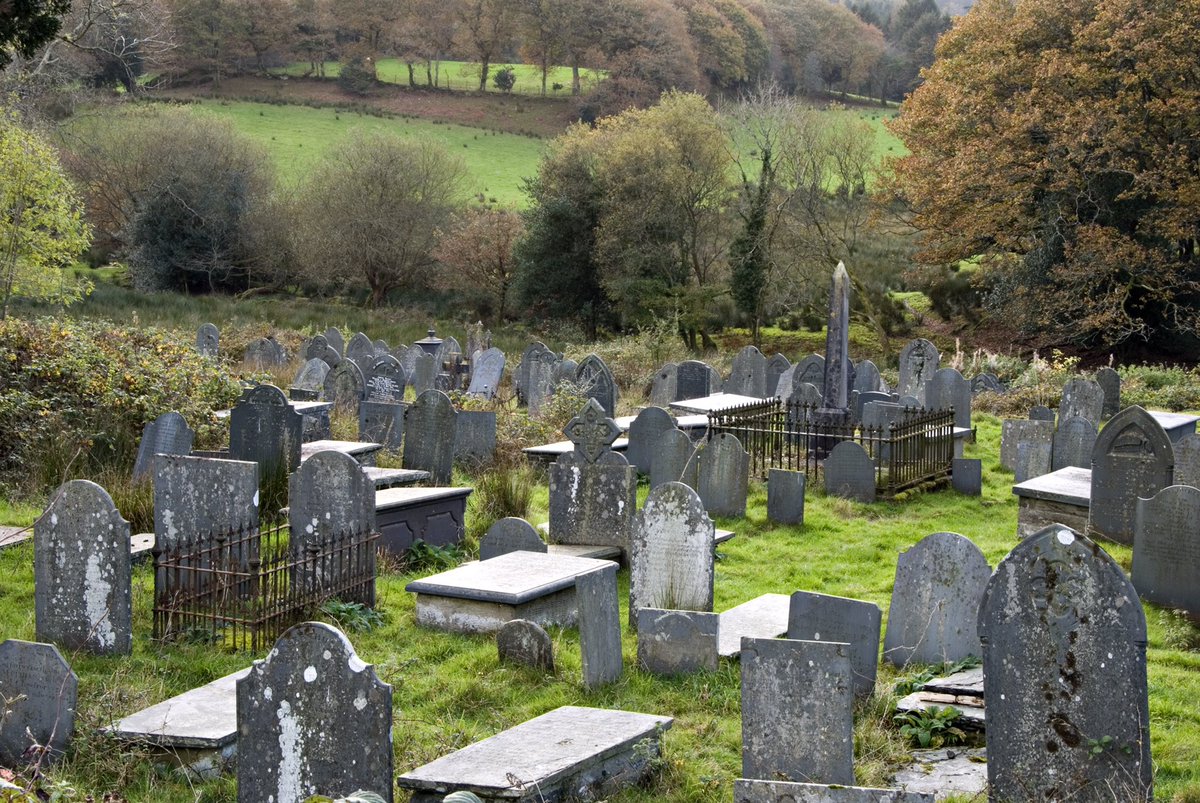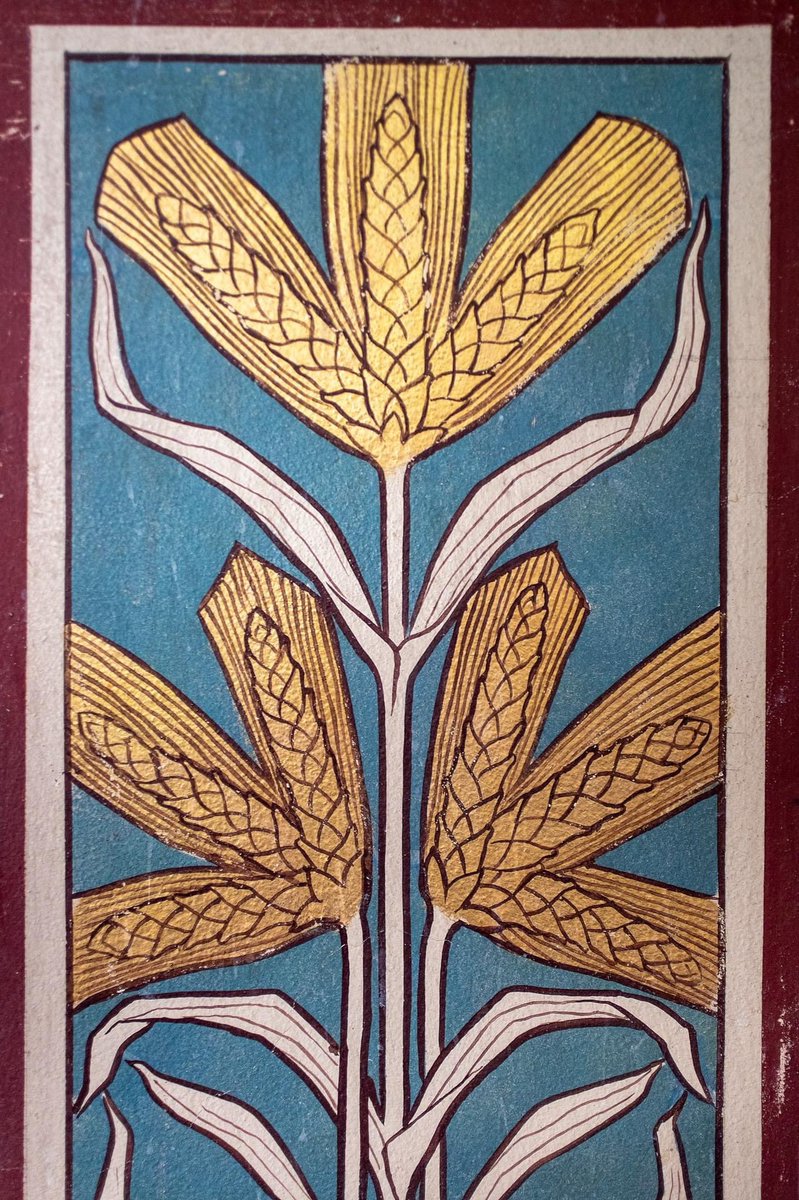
One Sunday afternoon in May 1908 the congregation at Ayshford Chapel in Devon were listening to a sermon. When suddenly, from the back of the church, there was a brouhaha ...
An adder — a foot and half long — had slithered in through the door!
An #AnimalsInChurches thread
An adder — a foot and half long — had slithered in through the door!
An #AnimalsInChurches thread

The 18 inch (46 cm) snake, with its distinctive zigzag markings, was now making its way up the aisle.
Members nearest the door ‘speedily quitted their places’ ...
Members nearest the door ‘speedily quitted their places’ ...
However, the commotion was short-lived, as was the unfortunate adder. It was ‘quickly killed’, and the service resumed.
😢
😢
News of the ADDER IN A CHURCH was gleefully reported in papers across England. In London, it featured in news ‘from the Provinces’.
Personally, my headline would have been 'Snake Seeks Ssunday Ssermon' (if you have a better one, please share!)

Personally, my headline would have been 'Snake Seeks Ssunday Ssermon' (if you have a better one, please share!)


The adder (Vipers berus) is the UK’s only venemous snake. They’re (usually) v. shy, so bites are rare & rarely dangerous; the last fatality from an adder bite was in 1975. Due to loss of habitat & other challenges, our adder population is sadly in decline.
/end
📸© Allan Drewitt
/end
📸© Allan Drewitt

• • •
Missing some Tweet in this thread? You can try to
force a refresh
























